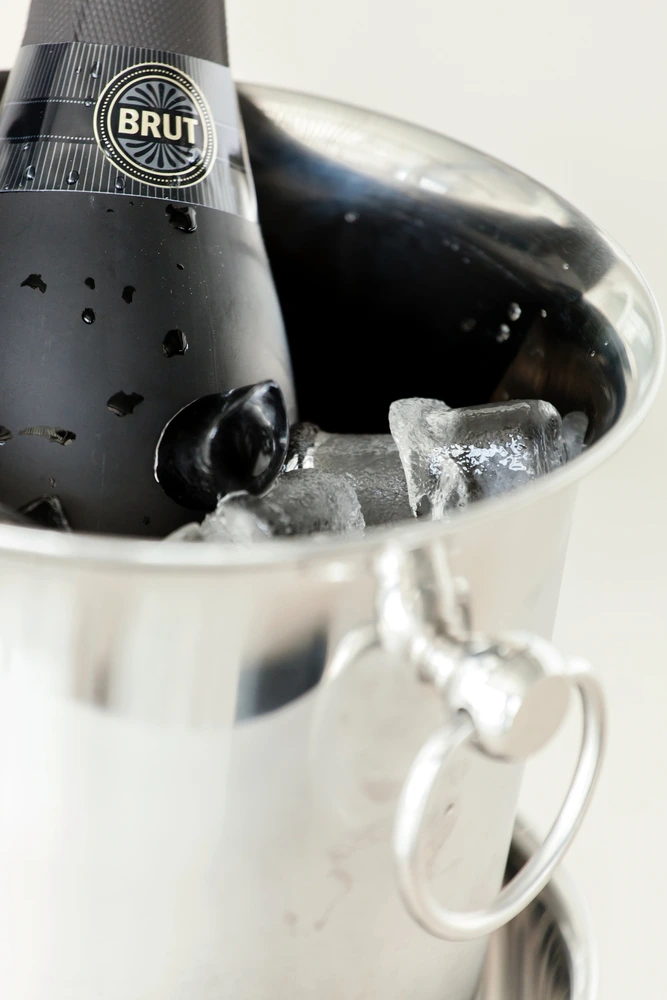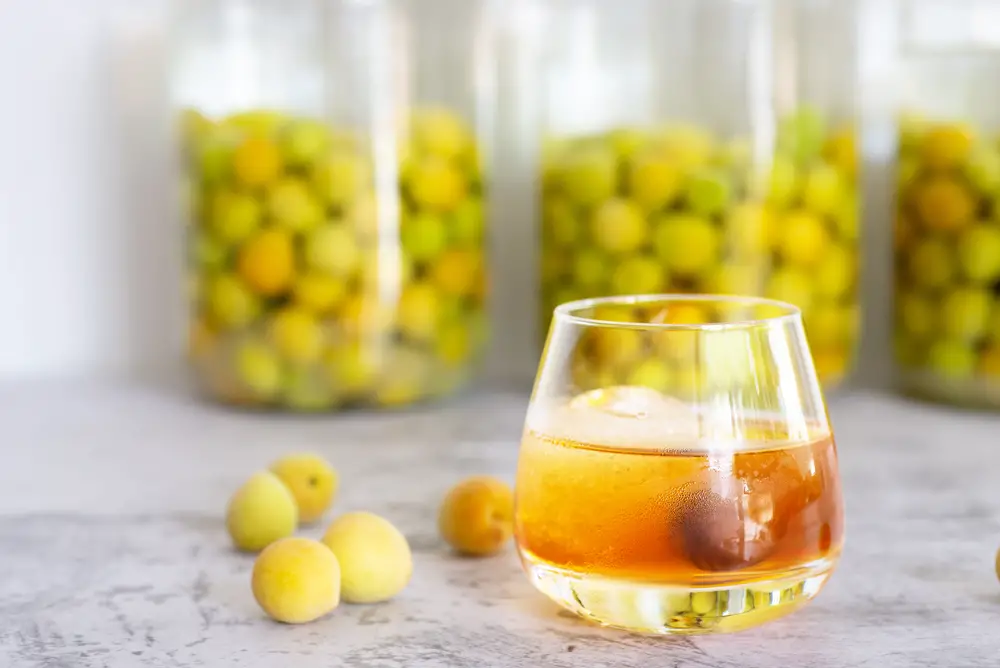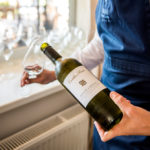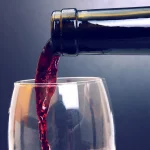Champagne remains a fairly popular drink option in many parts of the world and provides some surprisingly rich tastes among its many varieties. For example, Brut and Extra Dry champagnes are some of the most popular options on the market and create a fascinating array of taste options.
However, there is some confusion between the two types (as well as the differences between Champagne and Sparkling wine, too).
Champagne is typically rather sweet, but Brut and Extra Dry are drier and less sugary.
Unusually, people may find that Brut is drier than Extra Dry, which may cause some confusion when shopping for these products.
Thankfully, we’re here to help. We’re going to break down the differences between Brut and Extra Dry champagnes and give you more insight into their overall taste profile.
In this way, you should feel pretty comfortable purchasing one of these tasty and unforgettable champagne options.

Brut or Extra Dry – Which Champagne to Choose?
If you’re staring at a bottle of Brut and a bottle of Extra Dry, you’re likely experiencing what we in the wine world call a “decision dilemma.”
Both of these wines are fantastic and will create an amazing array of tastes that you’re likely to love.
But which is right for you? Let’s explore which option is better for sweet wine fans and which is more appropriate for dry wine enthusiasts.
Do You Like Sweeter Drinks? Go for Extra Dry
While there are sweeter champagnes on the market, Extra Dry provides a sweeter taste than Brut.
That is obviously a surprising conclusion because of these champagne’s names. Calling something Extra Dry and then finding it’s sweeter than another, similar champagne is likely to cause confusion.
It’s important to point out that these terms are relative here.
We’re not saying that Extra Dry is necessarily sweet. Compared to a dessert wine, it’s positively arid.
However, compared to Brut, Extra Dry is just a touch sweeter and probably more palpable for the average person.
Brut is Dry for Days

If you’re a dry wine fan and want to enjoy champagne, Brut is probably the choice for you. They’re drier than Extra Dry and typically have a fairly balanced overall taste.
Though there’s a little sugar here, you probably won’t notice it when you take a drink from this blend.
But where do these types of champagnes fall on the general champagne dryness and sweetness charts?
Understanding this information may make your purchase even easier. Knowing all of the options, you can compare what is right for you.
It also makes for an easier pairing process for various foods and desserts as well.
Champagne Sweetness and Dryness
The thing about champagne is that its light taste masks the fact that it’s usually a pretty dry drink.
The same is true of Brut and Extra Dry. Both are so tasty that it’s easy to forget they fall well within the dry range.
Let’s break down this dryness even further to help you out more.
In the next few sections, we’ll examine a few types of dry champagnes and compare Brut and Extra Dry to these levels.
These wines will be rated from driest to sweetest as you read.
Don’t worry: none of the champagnes here will fall within the very sweet dessert wine range that may not appeal to all drinkers.
Checkout low sugar wines here or Keto diet appropriate wines here if you are interested in dry/low sugar wines.
Brut Nature
Brut Nature is the driest champagne type and has a fairly nutty flavor that is common with the driest champagne types.
It has just zero to three grams per liter of Residual Sugar or RS. That’s less than one-sixth of a teaspoon of sugar.
Honestly, it doesn’t get much drier than this champagne!
We suggest it for those who want a nice nightcap or a wine they can pair with some sharp goat’s cheese. Yum!
Extra Brut
You get a bit more sugar with this wine: about double the grams at zero to six grams per liter. That’s still less than one-quarter teaspoon.
Some people complain that this wine is sour, which might make it a hard go for some people.
However, we think it goes pretty well with a nice fish dish, particularly if you let the fish soak in the wine and get right into its meat. Tasty to the extreme: we promise.
Brut
Brut sits somewhere within the mid-range of champagnes with around zero to 12 grams per liter of residual sugar.
That’s about one-half teaspoon, and it should mix pretty well with most foods.
While we’re not talking dessert wines, we think it goes great with a bit of roast pork. You can dip your roast shanks directly into this wine and feel the flavors just dripping off the meat.
Extra Dry
Extra Dry champagne may sit close to the Brut’s 12-gram range but is often as high as 17 grams.
That all depends on your brewer and what type of Extra Dry you purchase.
This option is a pretty good choice for those who want a balanced wine. It sits nearly exactly between the sweetest and driest options on our list.
In that way, it goes well with just about any meal: hamburger might be the best, though.
Dry
Dry has a surprisingly diverse sugar range: from between 17-32 grams per liter.
As a result, the sweetness may be a little off the charts compared to some options on our list.
If you’re not much of a sweet wine fan, you can stop reading the list at this point and stick to anything above this option.
If you love sweet wine, some crackers and pickled beef should blend beautifully with this one.
Demi-Sec
If 32 grams of sugar seems a little too dry for your tastes, how does 50 grams sound?
That’s about what you get with the sweetest demi-sec, which makes it dang near the sweetest option on our list.
However, there’s just one more to go, and that option falls truly within the dessert wine category. Italians may love demi-sec, as it goes well with many pasta dishes, though Greeks may love how it blends with feta cheese.
Doux
Dry wine fans will practically faint when they see these sweetness numbers: over 50 grams of sugar per liter!
Some people claim it tastes a bit like a cream soda, and we’re not inclined to disagree. Obviously, that kind of sweetness is not for everybody.
We recommend it as a dessert wine or a cooking sherry: it might even be sweeter than some of the cheaper cooking sherry options we’ve tried.
So, Is Brut Champagne Sweet or Dry?
There’s no reason to dwell on this part for too long: Brut champagne is typically not considered sweet because it has only 12 grams of residual sugar at the max.
As a result, the overall taste remains fairly dry, with even a hint of a sour aftertaste. Some people may find it a little hard to take.
That said, we love it as a good everyday dry, particularly when pairing it with pizza or other similar pasta dishes.
While we know some people prefer sweeter wines with pasta, we have to go out on a limb and say that they’re truly the best with drier wines like these. Call us crazy, but we stand by it.
What is Extra Dry Champagne, Exactly?
Extra Dry champagne’s name will probably forever remain confusing to budding champagne folks.
It’s nowhere near as dry as Brut Nature or even Brut champagne, and yet it gets hit with this Extra Dry name.
In fact, it serves as a good middle ground between more dry champagnes and sweeter options and shouldn’t overwhelm you with too much or too little sugar.
How Processing Times Affect Your Wines
The difference between Extra Dry champagne and other types is mostly in the processing time.
Sweet champagnes are like sweet wines in that they typically spend less time in processing tanks.
During this processing, yeast feasts upon sugar to leave behind alcohol as a residue. In fact, top quality Sparkling wines go through a secondary fermentation called Méthode Champenoise.
As you can imagine, champagnes processed for longer have much less sugar but a higher alcoholic content as a result.
This means Extra Dry will possess a pretty good balance between too much and too little alcohol.
Unlike Brut Natural, which may get your head spinning after two or three glasses, a typical wine fan can usually enjoy far more glasses of Extra Dry.
That balanced nature is one reason why it is so popular: the middle of the road is well-traveled and typically sells better than more extreme options.
Whoa! Is That an Insult?
That’s not to cut Extra Dry down or anything! We know that the term “middle of the road” may be used as a scathing insult to some wines, but we disagree in this case.
Extra Dry has the kind of balance that many fans love and goes well with just about anything.
There’s a reason why over 102 million liters of champagne get drank every year in France alone: it’s a great middle-ground for many wine drinkers.
Is Extra Dry Champagne Sweeter Than Brut Champagne?
Here’s another short-short answer: Extra Dry is definitely sweeter than Brut champagne.
Don’t be confused by the name! Brut is definitely a better option for those who want a drier and more alcohol-rich wine. But Extra Dry is a better choice for those who want a sweeter wine with more of a kick.
Now, the differences between these wines are a little fine compared to others on our list.
They’re right next to each other on the dryness and sweetness chart and should compare pretty well to each other.
That’s why we think you can’t go wrong with either, though you should definitely go Extra Dry if you want a sweeter option.
- Shrimp Cocktail (and More) Wine Pairing Guide - 09/06/2022
- What Wine Serving Sizes Look Like: Standard Size and More - 08/06/2022
- How Much Sugar is in Wine: Glass and Bottle Sugar Content - 08/06/2022






